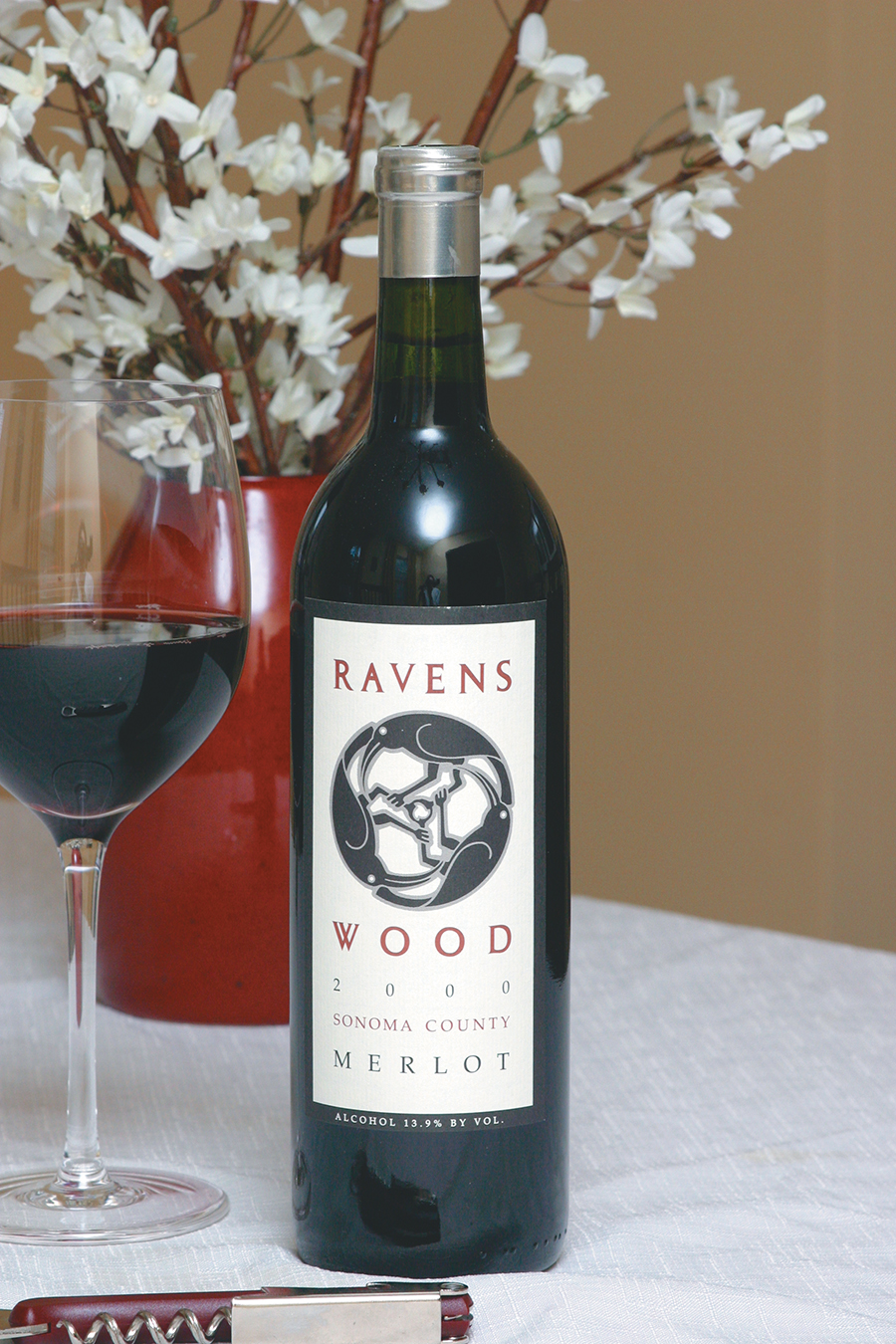America’s favorite red wine
By Matthew DeBord
HQ 51 | SPRING 2004
For the next several issues, I’m going to walk Huntington Quarterly readers through the most popular styles of wines currently available in most stores. Last issue, I covered Chardonnay, the world’s favorite white wine. This issue, it’s Merlot, America’s favorite red wine.
Understanding Merlot’s tremendous popularity isn’t difficult. The Merlot grape and Merlot-based wines have been around for a very long time. Merlot is, in fact, the main component of one of France’s greatest, most expensive, and most ageworthy wines, Château Petrus; it also makes up a decent portion of many of the famous First Growth wines of Bordeaux.
So the fine-wine business has plenty of experience with Merlot. However, the tradition was always to view Merlot as a blending grape — meaning that it rarely carried a wine all by itself. In France, Merlot is typically blended in with Cabernet Sauvignon. It lends fruitiness, body and plushness, taking the edge off what would otherwise be a harsh, brooding, Cab-based wine.
Wines made up primarily of Merlot, and marketed as such, became extremely successful in the United States about 10 years ago. This was during the glory days of the American wine boom, when it seemed that just about everyone had graduated from Gallo Hearty Burgundy and was ready to step up to a “real” red wine. Merlot, with its “drink me now” profile, fit the bill perfectly. It also made sense as a restaurant or bar by-the-glass order. Two simple syllables: Mer-lot. Bingo. Tasty red wine.
Unfortunately, as things often do in the perception crazed U.S. wine market, Merlot provided a little too much of a good thing. Naturally, as its popularity crested, gallons of fairly unimpressive Merlot began to arrive on the scene, from California and Australia. Over time, it became apparent to many seasoned wine drinkers that so-called “New World” Merlots weren’t delivering all that much. At their best, they were sweet, rich and juicy; at their worst, green and thin. There wasn’t a whole lot in between, unless you were willing to spend a lot of cash.
I’ve enjoyed close exposure to this phenomenon because I spend a lot of time on the North Fork of Long Island, a vital young American wine region that has staked its future on Merlot. The experience of winemakers on the North Fork is the Merlot craze in a nutshell. It was one of many grapes planted there in the 1970s, but as the industry matured and began to market its wines more aggressively, along came the Merlot craze. Presto! A ready-made audience. However, Long Island Merlot, while often quite nice in good vintages, can be dreadful in bad years. Recently, the winemakers I know on the North Fork have been altering their expectations. These days, they go for a more complex and balanced “European” style, rather than a big, fruit-bomb style.
Elsewhere, Merlot is still Merlot: a simple, good-time wine. I suggest a two-tiered strategy for getting to know this wine — and for learning its ins and outs. The best place to start is with a completely uncomplicated Australian version. Yellowtail, a new Australian megabrand with snappy labeling, produces a Merlot that sells just about everywhere for around $7. It’s nothing special, but it is rich and juicy and goes well with hamburgers and pizza. From there, you can move on to Merlots from California and Chile. Chile offers better value; look for the Cuvee Alexandre from Casa Lapostolle, a delicious example that’s always under $20.
From California, the good Merlot tends to combine plush berry and plum fruit flavors with what I’ll call oak effects — flavors of vanilla, chocolate (though that can come from the fruit, too) and spice. These can also be wonderful. Keep an eye out for the Diamond Series from Coppola (yes, Frances Ford Coppola), which retails for $16 or so. One of my personal under-$20 favorites comes from Flora Springs; this Merlot tends to show those terrific “oak effects” I mentioned. Also keep an eye peeled for inexpensive (under $10) Merlots from Rabbit Ridge and Ravenswood. They won’t disappoint.
I would recommend steering clear of Italian Merlots, however. A number of bottlings have appeared in recent years, labeled as Merlot, that I just don’t think they are very good. High on the list is a wine called Danzante that’s a collaboration between two big companies: the Mondavis of California and the Frescobaldis of Italy. You see this wine all over the place, priced below $10. To my palate, it isn’t there yet. It lacks the juicy pleasure that inexpensive California Merlot is known for. And from the Italian point of view, there are many, many better Italian red wines.
Okay, now that you’ve dealt with the basic stuff, you’re ready to decide whether it’s time to graduate to higher-quality Merlot. As with so many things in the wine world, you will have to go to France, specifically to Bordeaux. Here, you will no longer find Merlots labeled as such. They will instead bear the name of the Château that produced them (well, the truth is that they are sometimes labeled as Merlot, but not very often). You will also be dealing with wines that are mostly Merlot, with some other grapes blended in (usually a percentage of Cabernet Sauvignon).
In Bordeaux, the best Merlot region is St. Emilion, so look for that on the label. There are two Merlot-intensive wines from this appellation that I love: Château Faugeres, which is produced in large quantities and sells for just over $20; and Château Peby Faugeres, produced in much smaller quantities and a much higher price. Château Faugeres is one of those wines that’s great to keep around for slightly special occasions — like a festive Sunday dinner, when a really good wine isn’t called for, but when you require something better than an everyday pizza wine. Peby Faugeres, on the other hand, is a true special-occasion wine. It will show you what phenomenal Merlot is all about. I’m down to my last bottle from the 1998 vintage, which was the last vintage I could afford. Nowadays, a bottle will set you back $70. Worth it? Well, most of the time, I say that expensive Merlot is a rip-off. This is an exception.
Merlot might be overexposed and way too popular for its own good, but there are a few versions out there that are so astoundingly good they make you forget all your prejudices.





